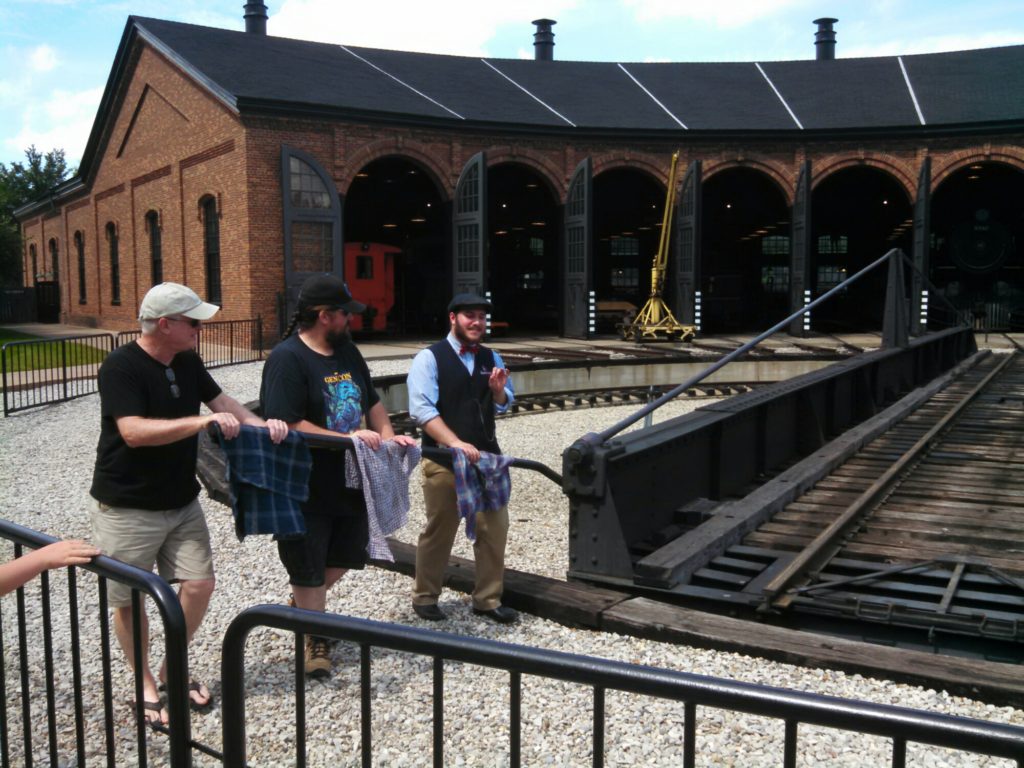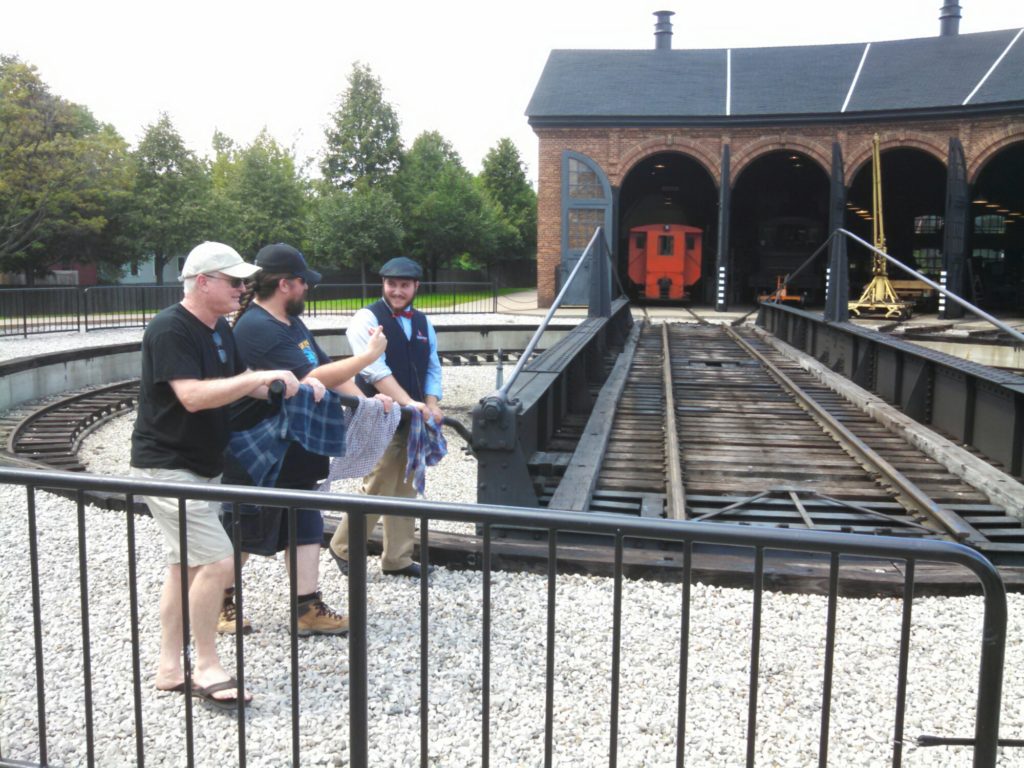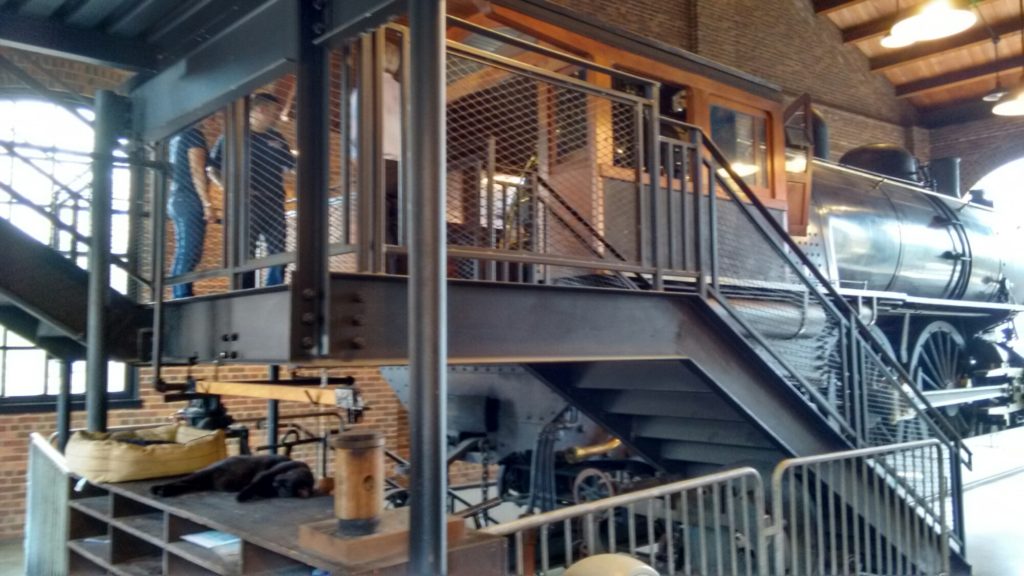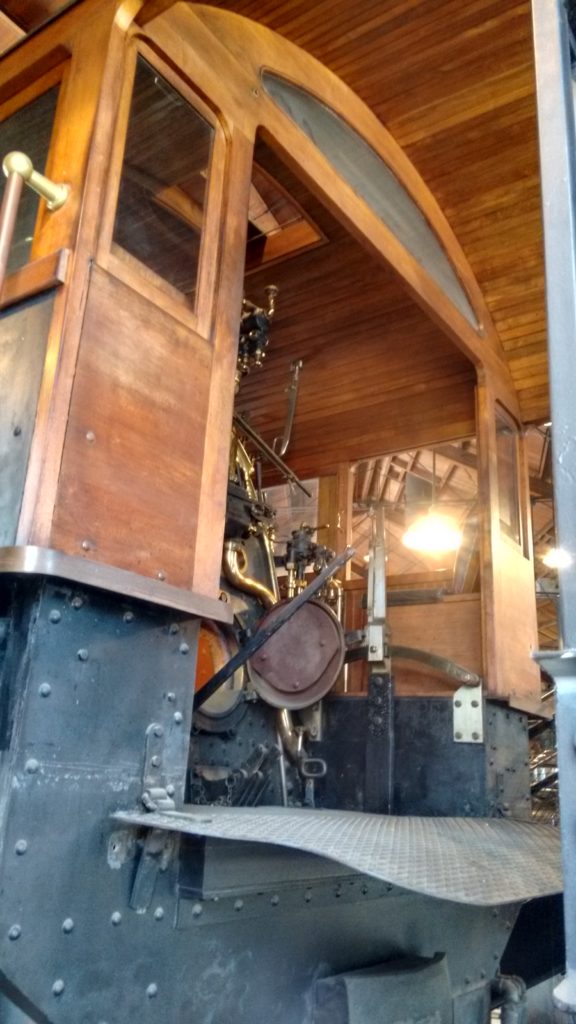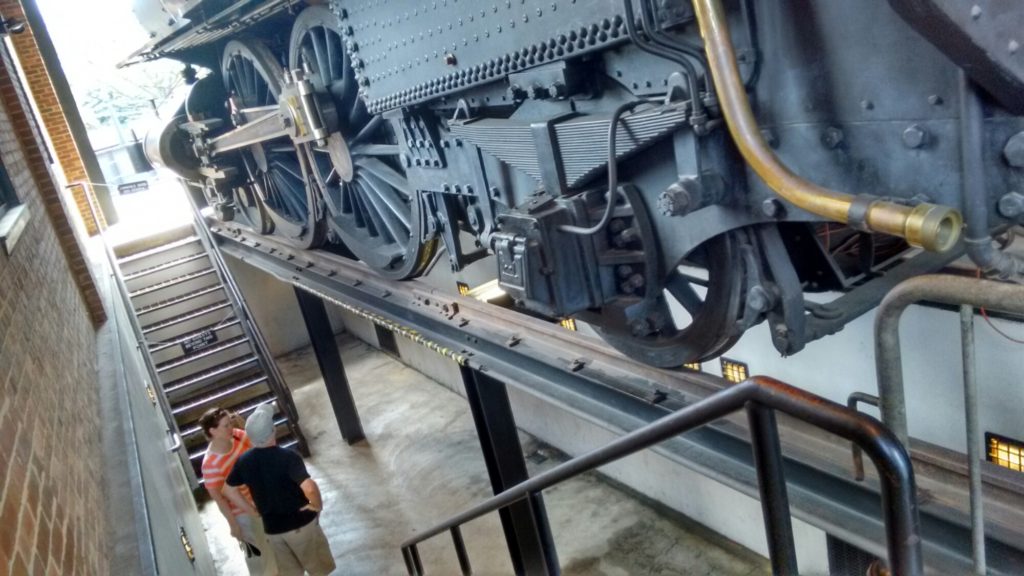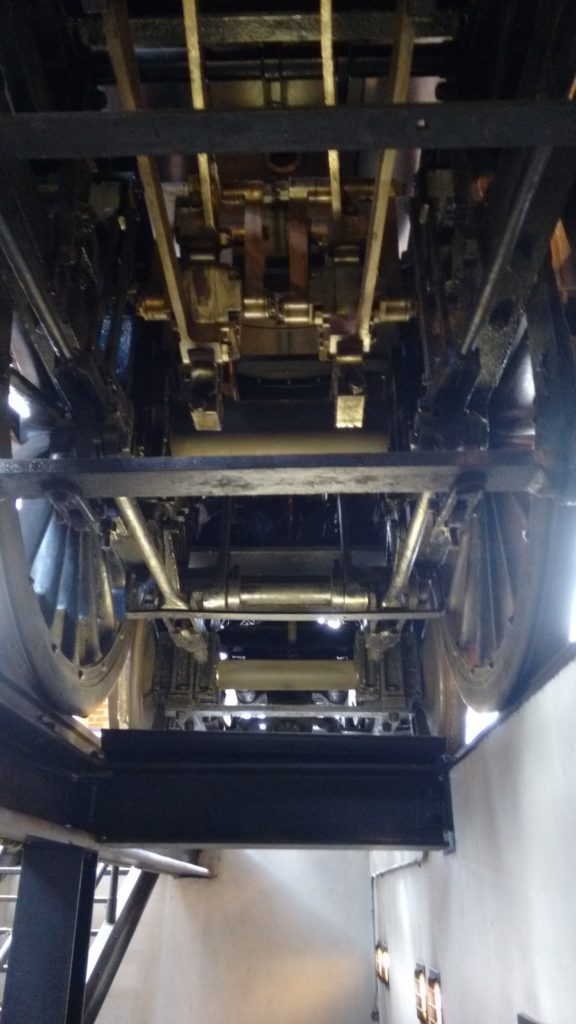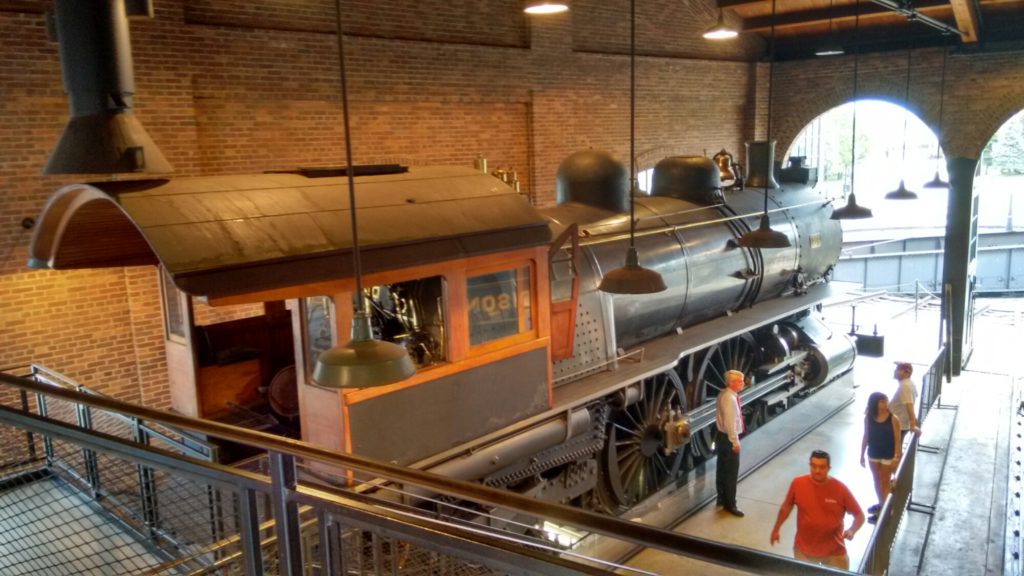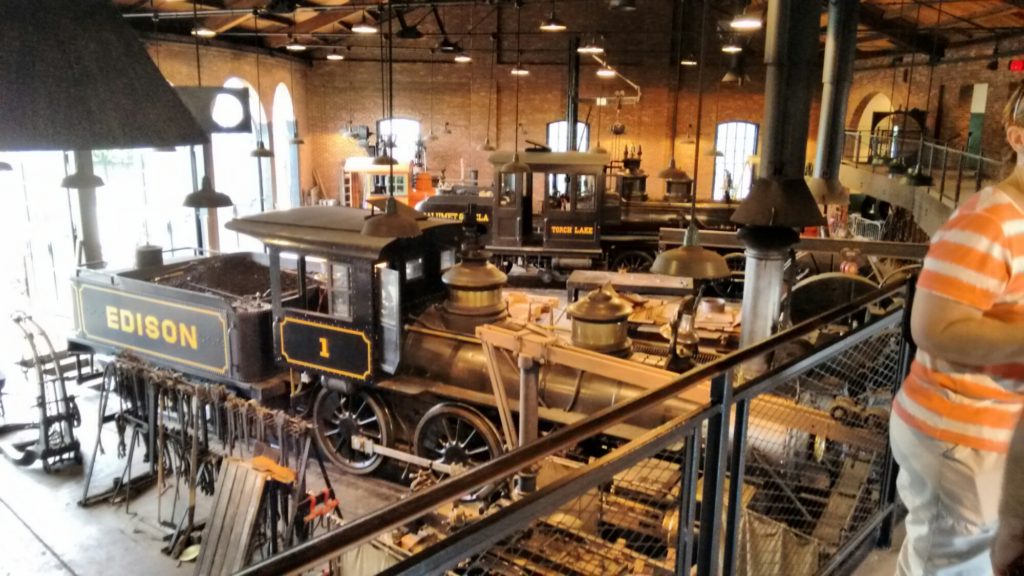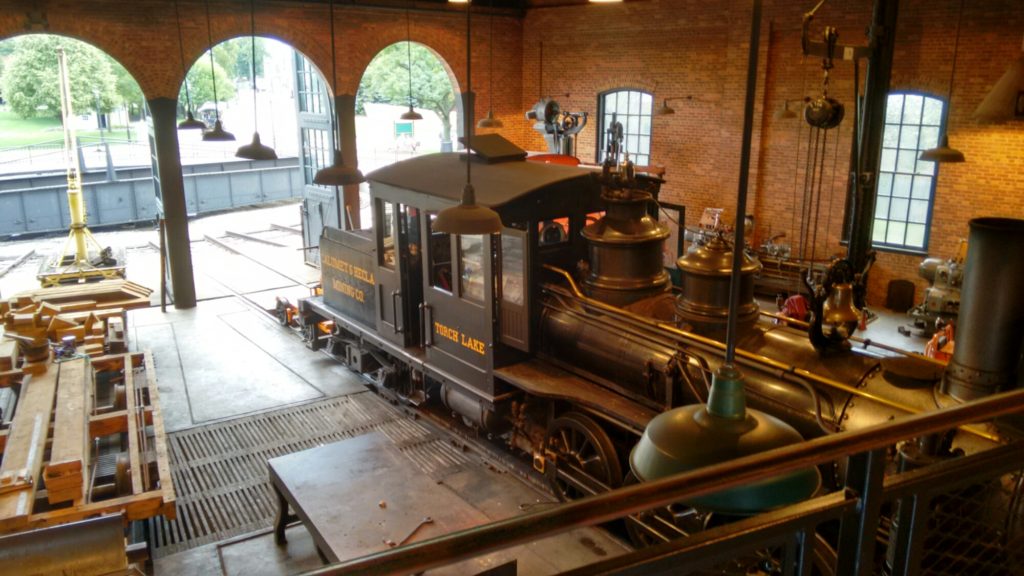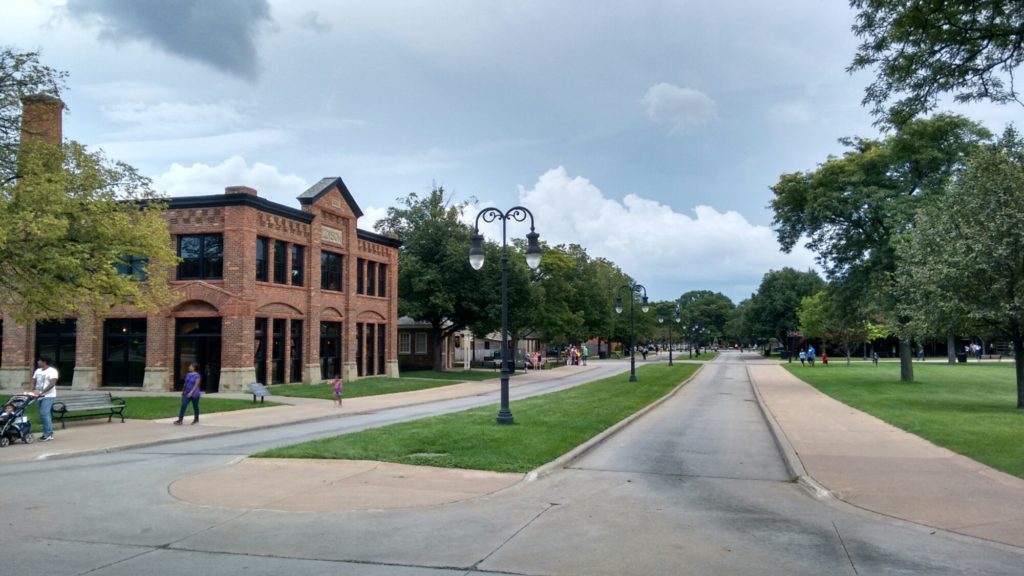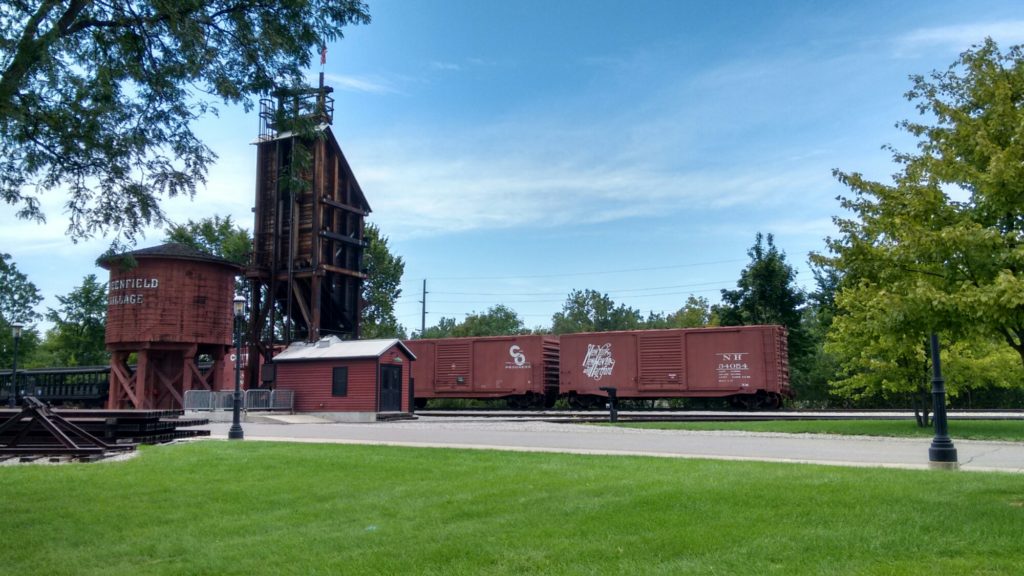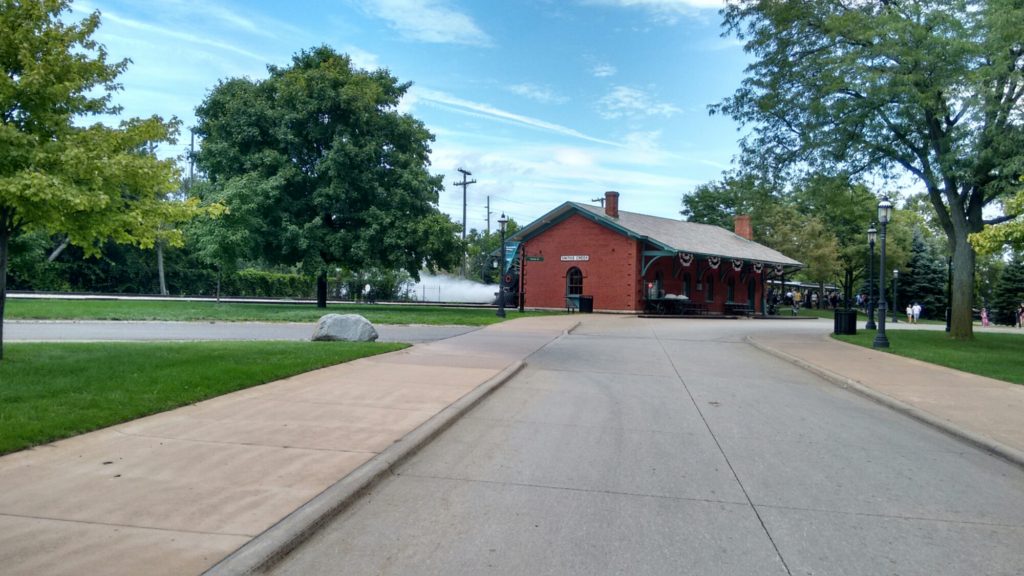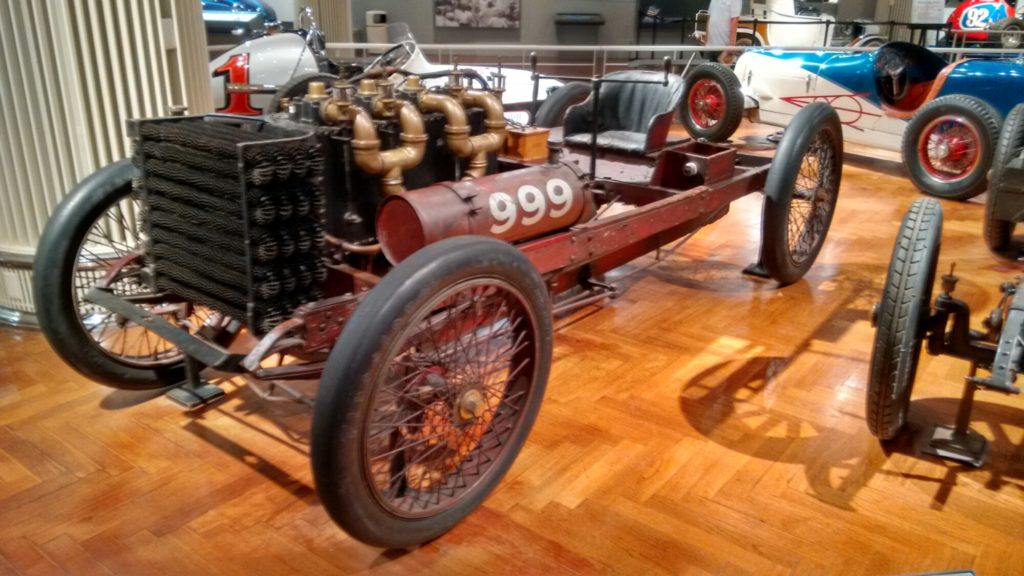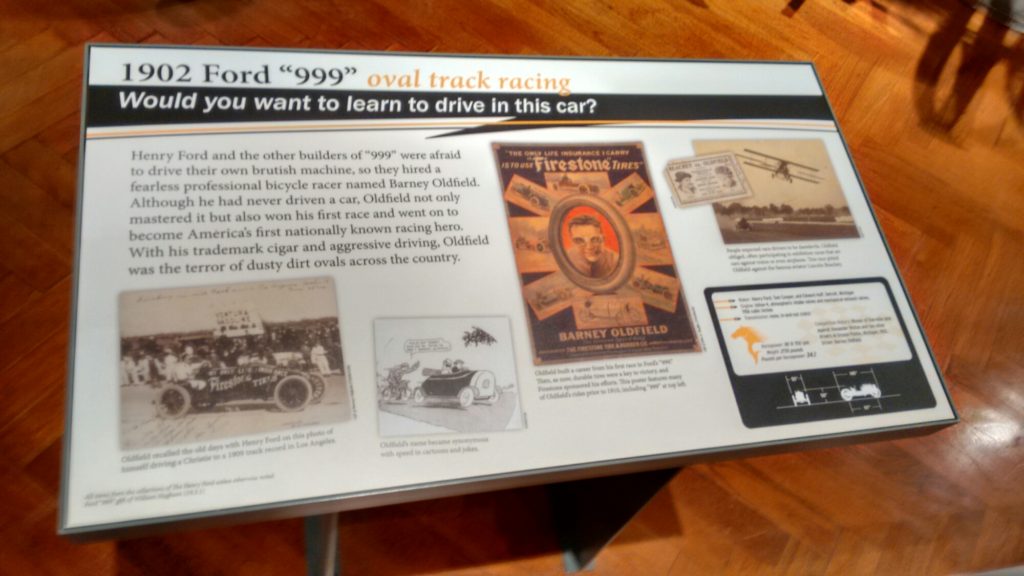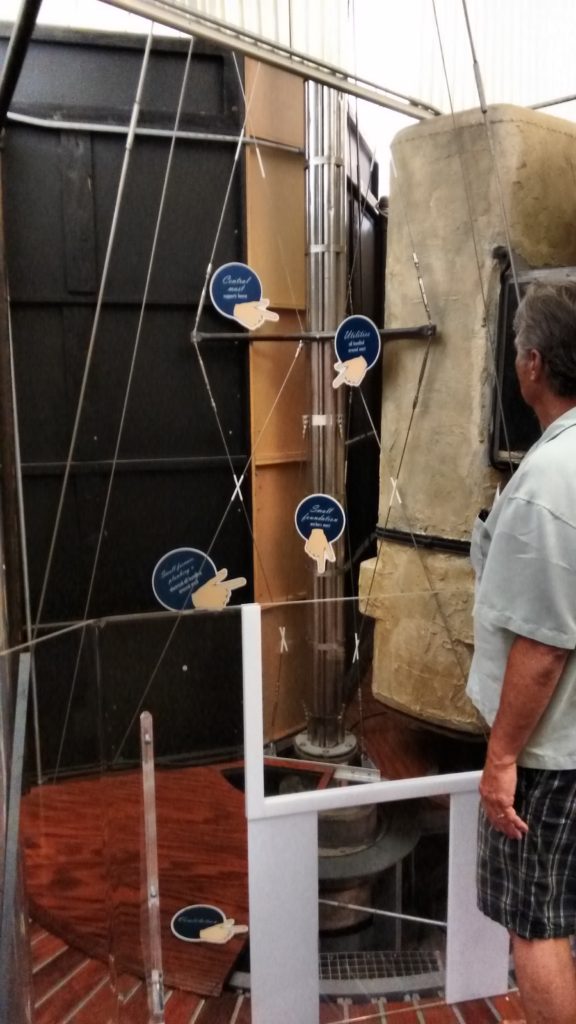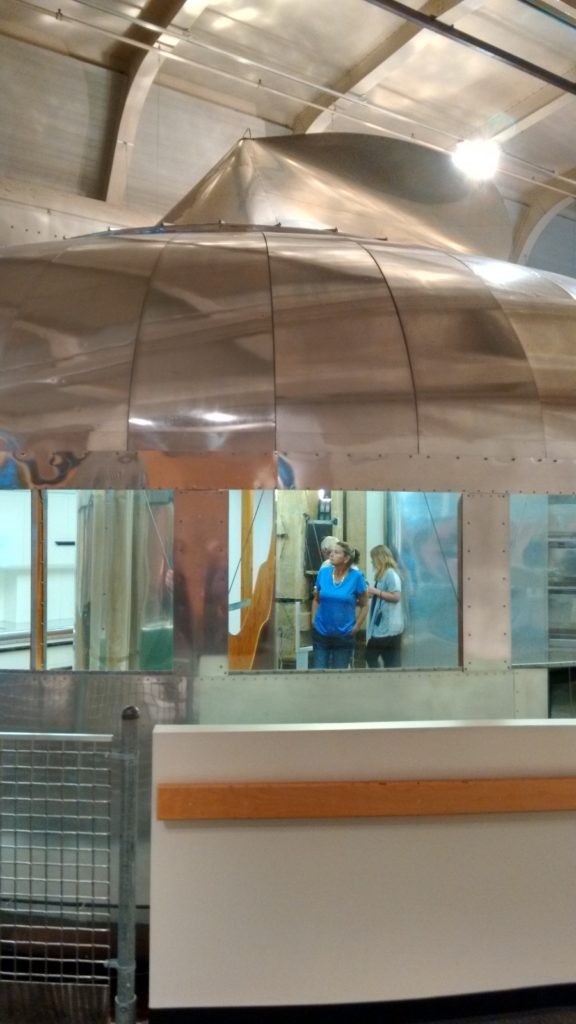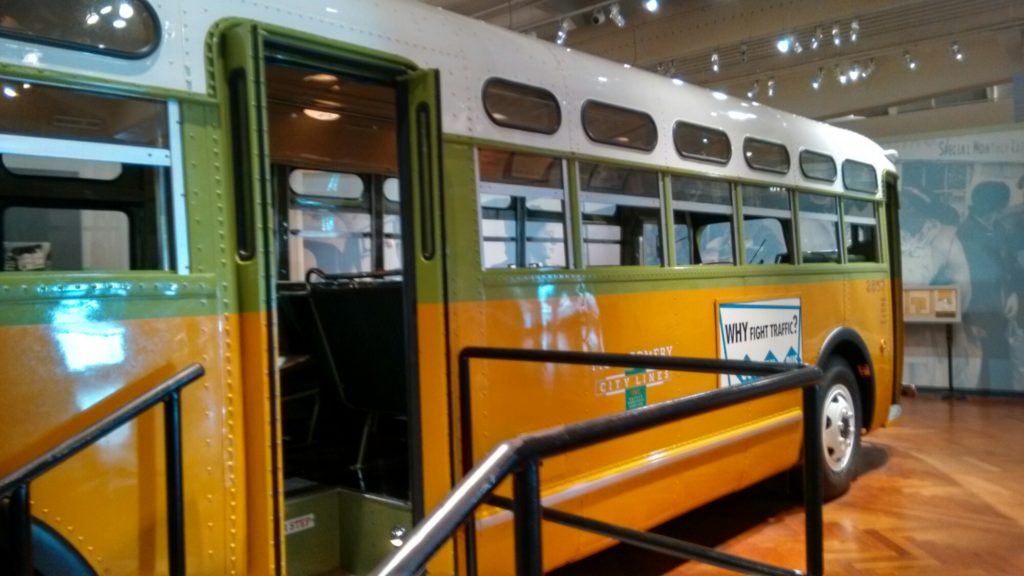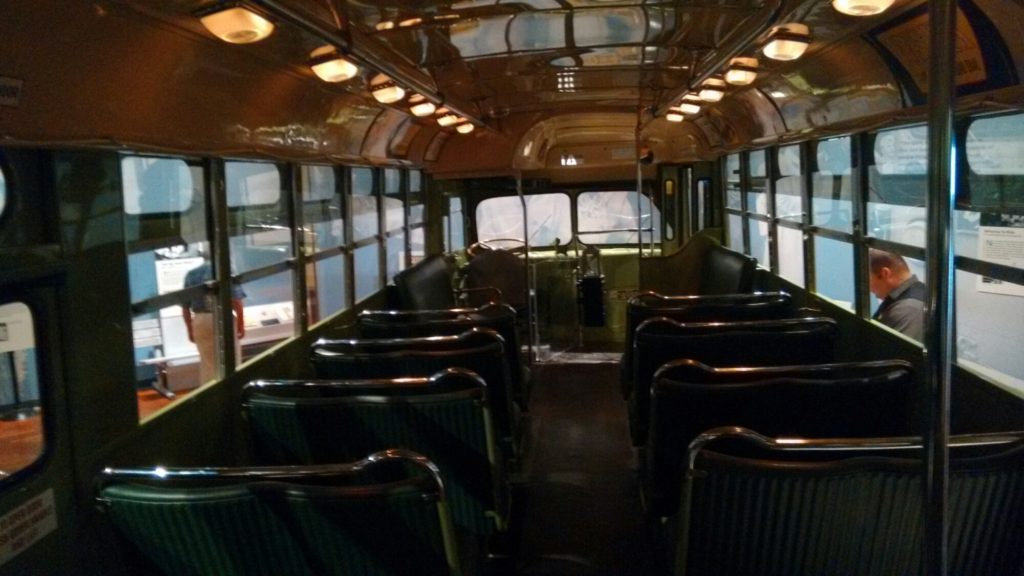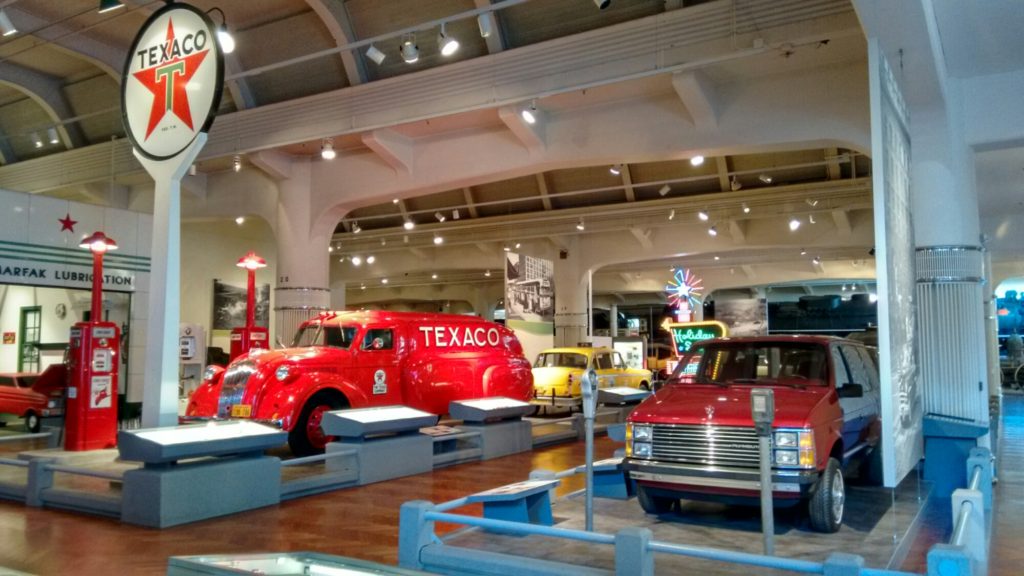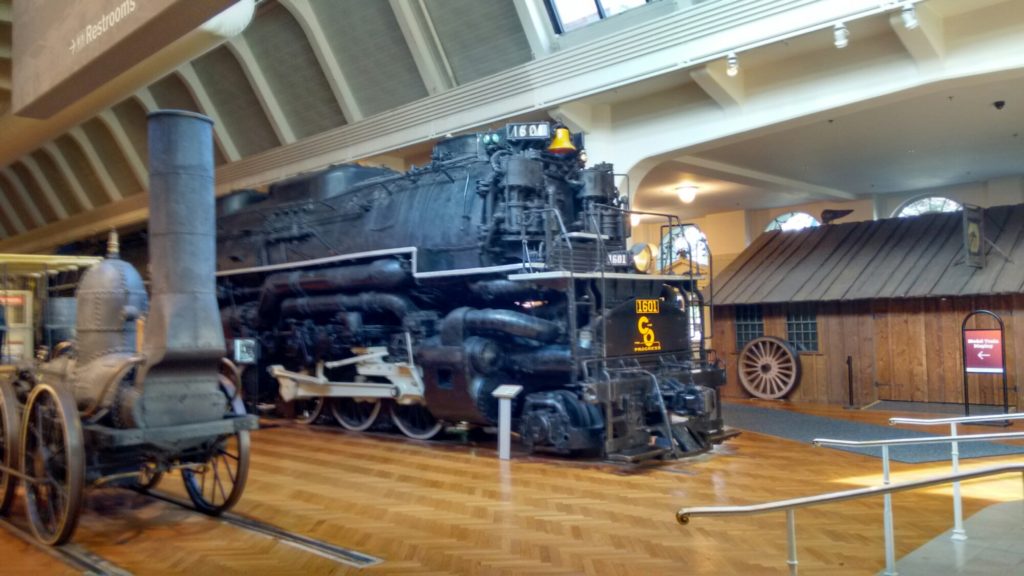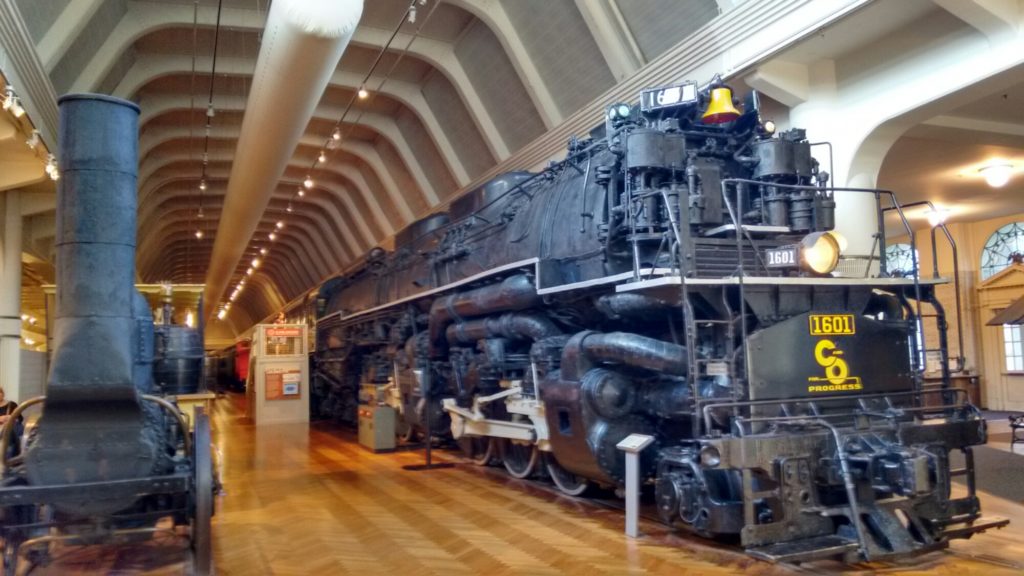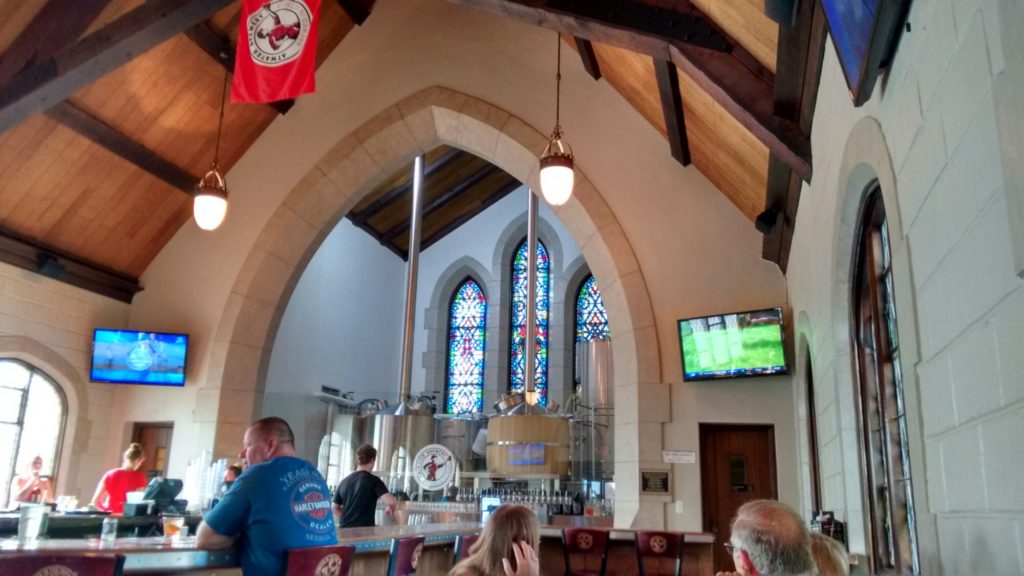On a Sunday which threatened rain but held off on actually delivering it where such a thing could be inconvenient, we went to The Henry Ford, which combines a ‘standard’ museum with a … living history museum?
Greenfield Village is a bit tricky to describe.
We ought to know more about the families who founded this nation, and how they lived. One way to do that is to reconstruct as nearly as possible the conditions under which they lived.
~ Henry Ford
It started as a way to show how things used to be, and there’s a certain element of nostalgia running through it.
But it’s also a collection of mostly American history; The Wright Brothers bicycle shop is here.
And it has working glassblowers, weavers, steam locomotives, tinsmiths, etc.
We had a go at pushing the turntable, which was surprisingly easy for something 70′ long that weighs 48 tonnes. Once it’s moving, it wants to keep moving, and the only real effort was in the starting & the stopping.
The Docent in the photo, besides having his mustache waxed into points, talked about having turned up to his job interview with a photo of six-year-old him at the opening of the Roundhouse. In his day job, he’s a trainee history teacher.
Various pictures inside the roundhouse, which is operating as intended, as a storage & maintenance facility.
Also, it has a cat, probably named Marshall, who takes care of the rodent population.
And occasionally visits other parts of the Village.
And once set off the alarms at the Wright House by sneaking in and falling asleep on the bed.
You can wander around under 100 tonnes of locomotive, which is a new one on me; I’ve never seen one from this angle before.
The Docents are all very into their area; The powerhouse guy was partway through a piece on DC vs. AC & 110V vs. 220V when we got there, and it was pretty technical, but also interesting.
Hadn’t known, for example, that in the early days the only thing you could use electricity for was light, as there were no appliances yet.
On the basis of some threatening weather, we moved inside, to the Henry Ford Museum.
Unsurprisingly, they had cars.
They also have the only Dymaxion House, originally assembled from two prototypes & lived in for 20 years, then rebuilt into an approximation of the intended house by the museum folk after it was donated.
The folks who lived in it had it as an add-on to a more conventional structure, and it looked liked someone had materialised a UFO in a regular house.
There are some spots left unfinished, to show off the central support & modular bathroom.
The idea was that it’d be a two bedroom two bathroom home, with fireplace, motorised revolving storage system in place of shelves (a loop of shelf-baskets inside the wall), and a dust-proof hat-rack in the front hall closet, because that’s what every house needs.
Surprisingly for this place, not the original.
It’s a replica built for the 100th anniversary.
Bigger than I’d imagined; All the stories mention how small it was, and how the first flight was shorter than the wingspan of a 747, and so on, but … it’s pretty big.
I’d also not known why they chose Kitty Hawk as a location; Turns out it’s the town nearest to what is now the town of Kill Devil Hills, where there is a beach with predictable winds, flat surfaces, and not a lot to run into.
There was a Docent in the Wright Bicycle Shop who was able to explain what looked like a photo taken of the Flyer in mid-air from another aircraft, which made me wonder how it was taken; Turns out they’d launched from a dune or bluff, past the camera, and what looked like a house & barn in fields was actually a couple of tents on a beach.
And here’s the bus Rosa Parks sat down in.
I’m amazed that they kept it, or at least were able to identify it.
The Docent did point out the specific seat; I did not sit in it. Didn’t feel right that I should do so.
Took this one just because of the styling of the Texaco truck there; At some point, I shall look up what it was for.
~googles~
OK, tanker truck. Very stylish tanker truck.
And finally, a locomotive so damn big that I couldn’t photograph it in a way that captured it’s size.
The structure to the left of the engine is stairs leading up to the (enormous) cab.
The little pale smudge above that structure is a person’s head & shoulders as they walk in; I could stand comfortably in there, and had to reach up to touch the ceiling.
And finally, on the way back, a drink at Atwater In The Park, a brewery in a (former) church.
I had a cider, though, in deference to the city, it was their Detroit Cider.
